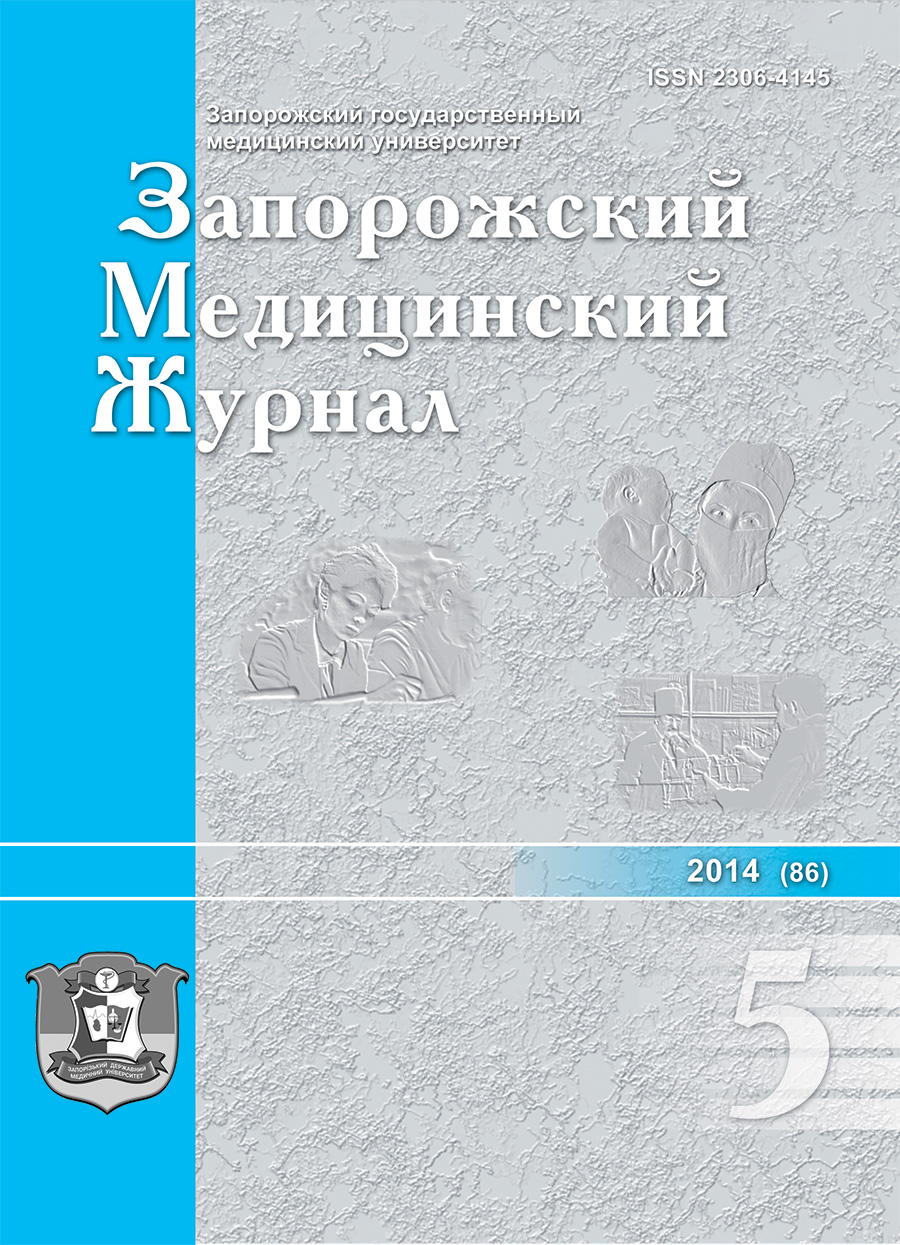DYNAMICS OF PARAMETERS OF PROINFLAMMATORY ACTIVATION IN PATIENTS WITH HYPERTENSION UNDER INFLUENCE OF CANDESARTAN THERAPY
DOI:
https://doi.org/10.14739/2310-1210.2014.5.28726Keywords:
Hypertension, Proinflammatory Activation, C-Reactive Protein, Soluble Form Of Intercellular Adhesion Molecule-1, Tumor Necrosis Factor-alfa, CandesartanAbstract
Aim. Proinflammatory activation is one of the possible pathogenetic mechanisms of formation and progression of hypertension. 107 patients with essential hypertension (EH) II stage was included into the study of the pro-inflammatory activation.
Methods and results. Levels of C-reactive protein (CP), α-tumor necrosis factor (α-TNF) and soluble form of intercellular adhesion molecule-1 (sICAM-1) in the serum were studied by ELISA before and after 12 weeks of treatment with candesartan. 31 healthy subjects were included in the control group. It is found that C-reactive protein in 5,18 times (p<0,05), α-tumor necrosis factor on the 39,04% (p<0,05) and sICAM-1 to 41, 87% (p<0,05) higher in hypertensive patients with stage II than those of the control group. Significant reductions of CRP in the blood serum by 70,33%, α-TNF – by 19,94% and sICAM-1 inserum by 18,46% compared to baseline (p<0,05) were found under the influence of candesartan therapy.
Conclusion. These data indicate the presence of activation of proinflammatory processes in hypertensive patients with significant progression according to the degree of blood pressure and additional anti-inflammatory properties of candesartan.References
Bautista, I. L. E., Veram, L. M., Gamarra, G. & Arenas, I. A. (2005) Independent association between inflammatory markers (C-reactive protein, interleukin-6, and TNF-a) and essential hypertension. J. Hum. Hypertens, 19, 149–154.
Chae, C. U., Lee, R. T., Rifai, N. & Ridker, P. M. (2001) Blood pressure and inflammation in apparently healthy men. Hypertension, 38, 399–403. doi: 10.1161/01.HYP.38.3.399.
Blake, G. J., Rifai, N., Burning, J. E. & Ridker, P. M. (2003) Blood pressure, C-reactive protein, and the risk of future cardiovascular events. Circulation, 108, 2993–2999. doi: 10.1161/01.CIR.0000104566.10178.AF.
Savoia, C. & Schiffrin, E. L. (2006) Inflammation in hypertension. Current Opinion in Nephrology and Hypertension, 15(2), 152–158.
Savoia, C. & Schiffrin, E. L. (2007) Reduction of C-reactive protein and the use of anti-hypertensives. Vascular Health and Risk Management, 3(6), 975–983.
Derosa, G., Maffioli, P., Salvadeo, S. A., Ferrari, I., Gravina, A., Mereu, R., et al. (2010) Candesartan effect on inflammation in hypertension. Hypertens. Res, 33, 209–213. doi:10.1038/hr.2009.212.
Cearing, A. J. H. & Newman, W. (2003) Circulating adhesion molecules in disease. Immunol. Today, 14, 506–512.
Mendall, M. A., Patel, P., Ballam, L., Strachan, D., & Northfield, T. C. (1996) C-reactive protein and its relation to cardiovascular risk factors: a population based cross sectional study. BMJ, 312, 1061–1065. doi: http://dx.doi.org/10.1136/bmj.312.7038.1061.
Sesso, H. D., Buring, J. E., Rifai, N., Blake, G. J. et al. (2003). C-reactive protein and the risk of developing hypertension. Journal of the American Medical Association, 290(22), 2945–2951. doi:10.1001/jama.290.22.2945.
Yudkin, J. S., Stehouwer, C. D. A., Emeis, J. J. & Coppack, S. W. (1999) C-reactive protein in healthy subjects: associations with obesity, insulin resistance, and endothelial dysfunction. A potential role for cytokines originating from adipose tissue? Arterioscler. Thromb. Vasc. Biol., 19, 972–978. doi: 10.1161/01.ATV.19.4.972.
Dinarello, C. A. (2000) Proinflammatory cytokines. Chest, 118, 503–508. doi:10.1378/chest.118.2.503.
Blann, A. D., Tse, W., Maxwel, S. J. R. et al. (2004) Increased level of the soluble adhesive molecules in essential hypertension. Hypertens, 12, 925–928.
Bautista, L. E., Vera, L. M., Arenas, I. А. et al. (2005) Independent association between inflammatory markers (C-reactive protein, interleukin 6 and TNF-alpha) and essential hypertension. J. Hum. Hypertens, 19(2), 149–154.
Mehra, V. C., Ramgolam, V. S., Bender, J. R. (2005) Cytokines and cardiovascular disease. J. Leukoc. Biol, 78, 805–818. doi:10.1189/jlb.0405182.
Niskanen, L. (2004) Is hypertension an inflammatory condition? Hypertension, 44, 859–865.
Kuleshov, S. K., Vorobev, E. A., Solomatina, L. V. et al. (2008) Provospalitelnye faktory u bol`nykh arterial`noj gipertenziey kak ob'ekt medikamentoznogo vmeshatel`stva [Pro-inflammatory factors in patients with arterial hypertension as an object of medical intervention]. Ukrainskyi medychnyi chasopys, 2, 30–34. [in Ukrainian].
(2012) Rekomendatsii Ukrainskoi asotsiatsii kardiolohiv z profilaktyky ta likuvannya arterialnoi hipertenzii [Ukrainian Heart Association Guidelines for the prevention and treatment of hypertension]. Ukrainskyi kardiolohichnyi zhurnal, 1, 102–110; 2, 73–102. [in Ukrainian].
Downloads
How to Cite
Issue
Section
License
Authors who publish with this journal agree to the following terms:
Authors retain copyright and grant the journal right of first publication with the work simultaneously licensed under a Creative Commons Attribution License that allows others to share the work with an acknowledgement of the work's authorship and initial publication in this journal. 

